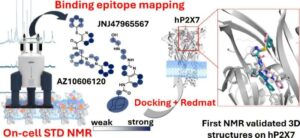
Recent research has challenged the long-held belief that the Victorian era was pivotal in creating modern dog breeds. A study conducted by the University of Oxford reveals that the diverse lineage of domestic dogs can be traced back to ancient times, significantly predating the Victorian period.
Domestic dogs are among the most varied mammals globally, showcasing an incredible range of shapes and sizes. From the diminutive chihuahua to the towering Great Dane, and from the flat-faced pug to the long-muzzled borzoi, the physical differences are striking. This diversity has long led researchers to investigate the origins of these breeds.
The study, which will be published in March 2024, emphasizes that the roots of modern dog breeds extend deep into prehistoric times, where early ancestors of dogs underwent extensive evolution. These findings suggest that it was not merely the Victorian era’s breeding practices that shaped the variety we see today, but rather a complex interplay of natural selection and human influence over thousands of years.
Uncovering the Canine Past
The research team utilized advanced genetic analysis techniques to examine the DNA of various dog breeds. They discovered that many traits we associate with specific breeds today have origins in ancient dogs that roamed the earth thousands of years ago. This revelation indicates that the dramatic appearances and temperaments of modern dogs did not emerge solely due to selective breeding in the 19th century.
According to Professor David MacHugh from the University of Oxford, “Our findings highlight the importance of understanding the evolutionary history of dogs. The traits we admire today are the result of a long and intricate history, not just a single period of breeding.” The study underscores how historical factors, including geography and lifestyle, influenced the development and diversification of dog breeds.
Researchers believe that the domestication of dogs began more than 15,000 years ago, with early humans selecting animals for specific traits that aided in hunting and companionship. Over time, as human societies evolved and migrated, so too did the dogs, leading to the wide variety of breeds recognized today.
The Role of the Victorian Era
While the Victorian period did play a significant role in formalizing dog breeding through kennel clubs and breed standards, its impact on genetic diversity was limited. The establishment of breed registries aimed to preserve specific traits, but this was a continuation of practices that began long before. The emphasis on purebred dogs during this time, while popular, may have inadvertently narrowed the gene pool.
As the study illustrates, the legacy of Victorian breeding practices is intertwined with the broader narrative of canine evolution. The impact of early domestication, environmental adaptations, and societal needs forms the backbone of what we recognize as modern breeds.
Understanding this complex history can reshape how we view the relationships between humans and their canine companions. It also opens up new avenues for conservation and breeding practices aimed at preserving genetic diversity among dog breeds.
In conclusion, the research from the University of Oxford not only uncovers the ancient origins of modern dog breeds but also challenges preconceived notions about their development. As our understanding of canine history deepens, it becomes clear that the bond between humans and dogs is both ancient and continually evolving.







